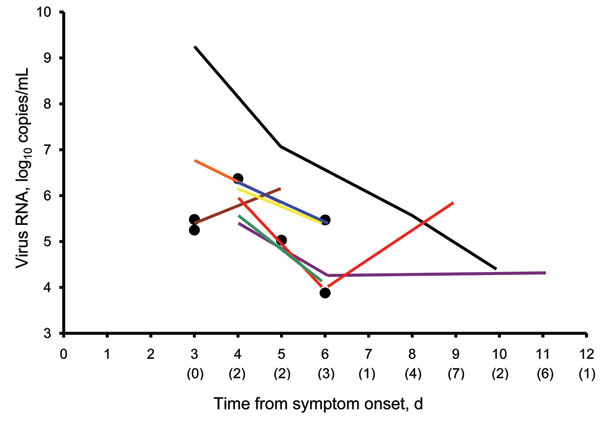Volume 17, Number 4—April 2011
Research
Shedding of Pandemic (H1N1) 2009 Virus among Health Care Personnel, Seattle, Washington, USA
Figure 2

Figure 2. Virus RNA concentrations over time among health care personnel infected with pandemic (H1N1) 2009 virus, Seattle, Washington, USA. Each colored line represents a virus RNA concentration for an infected person tested from symptom onset until the first of 2 consecutive negative results by real-time reverse transcription–PCR (RT-PCR) for pandemic (H1N1) 2009 virus. Persons who had virus detected by real-time RT-PCR only once are indicated by solid circles. The lower detection limit of the real-time RT-PCR was 3 log10 copies/mL. Numbers of persons with virus RNA concentrations below the detection limit for each day after symptom onset are shown in parentheses below the x-axis. Sixteen infected persons were receiving oseltamivir.
Page created: July 25, 2011
Page updated: July 25, 2011
Page reviewed: July 25, 2011
The conclusions, findings, and opinions expressed by authors contributing to this journal do not necessarily reflect the official position of the U.S. Department of Health and Human Services, the Public Health Service, the Centers for Disease Control and Prevention, or the authors' affiliated institutions. Use of trade names is for identification only and does not imply endorsement by any of the groups named above.